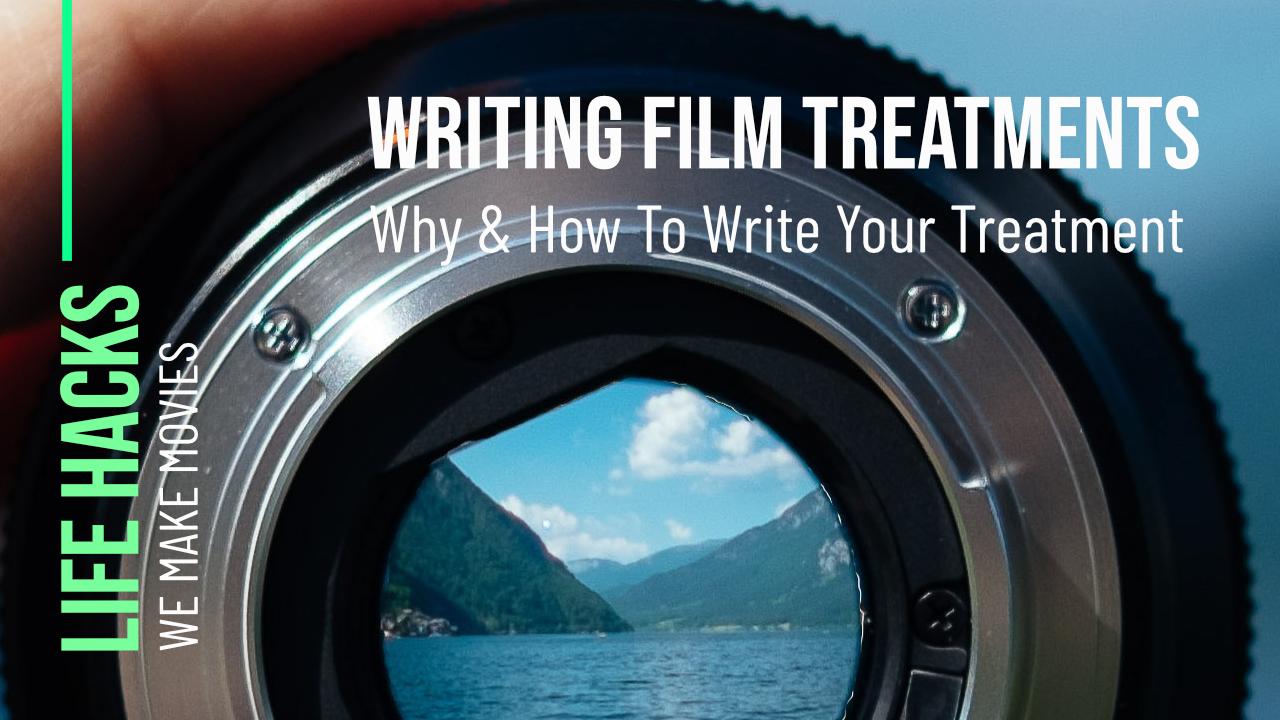WMM BLOG
How To Pitch A Feature Film Part I: The Art of the Beat Sheet

As our Make Your Feature Competition submission period is now closed, we are narrowing down our choices for the semi-finals. While the initial submission process only required a treatment of the film, the next round of selections will be based off of a virtual pitch to the community, as well as a few requisite presentation materials. The first is a beat sheet (covered below) along with an artistic primer (a statement describing the intended genre, visual style, similar films, approach to production, and tone of the film), and the second is a version of either a look book or proper pitch deck (both covered in PART II of this series).
What Is A Beat Sheet?
A beat sheet is a specific tool for storytelling on screen that serves as a road map or skeleton of the story that dives into the pivotal emotional moments that drive the story itself. Whereas an outline describes the scenes, settings, and more concrete details of a film, a beat sheet organizes the intangible thoughts and feelings of...
How To Make A Feature Film For 25K

Few feature films have racked up cultural significance or conquered cinematic feats while made on ultra (ultra, ultra... ultra) low budgets. There's the 1977 experimental, horror masterpiece that is "Eraserhead", which was wildly celebrated auteur David Lynch's 10K budget debut into the realm of feature filmmaking. There are the found-footage horror gems "The Blair Witch Project: (made for 25K) and "Paranormal Activity" (made for 15K), the neo-Western action film that put Robert Rodriguez on the map, "El Mariachi" (made for 7K), and the clever neo-noir "Following" (made for 6K) by a then novice Christopher Nolan.
Then there are the directors who made their impression on the indie film world with their low-budget contributions, oftentimes shaking up what was considered acceptable and palatable for large audiences. There are a handful of 90's cult classics that delivered filmmakers like Kevin Smith ("Clerks" - made for 27K), and his predecessor Richard Linklater ("Slacker" made for 23...
Why Become A Member? What WMM Can Do For You

What Level of Membership Is For You?
Writing Film Treatments: Why & How To Write Your Treatment

You have a story to tell, but before you embark on the process of writing the script, consider writing a treatment. A film treatment is a sexy outline of your story, a roadmap, a detailed synopsis of your film or visual project (music videos, commercials, etc.). It contains all the essential elements of your film, such as the core concept behind your story, significant scenes, main character arcs, and crucial plot points. It's purpose is to sell your story to a potential producer or investor but it's a valuable tool as part of the development process as well. It helps you explore the world in which your story lives, aids in nailing down the tone and genre of your project, and allows you to work out other kinks in plot points.
A treatment is the written pitch that can convince the reader, or in the case of our MAKE YOUR FEATURE COMPETITION, our investors (multiple) and producers (that's us - WMM) to want to read the full script. The basics of a treatment include a title, your name...
Indie Film Development - WMM Lab Pipeline

We Make Movies has made a name for itself as a diverse, synergistic, sustainable ecosystem for artists and content creators. We have been paving the way towards democratizing storytelling, and the industry as a whole. Gone are the days when excessive financing, unattainable tools of the trade, and permission from industry gatekeepers unnecessarily limit us from telling stories. We’re dedicated to empowering creatives of all ages by providing free weekly labs, discounted resources and services, educational industry events, showcases, and film challenges.
POV: DIY Filmmaking With Style

We had a chance to sit down with the dedicated Chief of Production of We Make Movies, Eric Michael Kochmer. As a longtime member of the collective, he has always made himself available to the community, while broadening his own skillsets as he made his films. His tireless efforts to bolster fellow indie filmmakers led to the development of the production services offered through our production company. He is industrious, kind, and enterprising, but what makes him tick? We asked him!
WMM: Where are you from, what is your background, and how do you think that informs what you do as a filmmaker?
EMK: I grew up on a dairy farm in Pennsylvania and then I moved to New York City to study experimental theater. I’ve always had an interest in the peculiar which turned into a passion for the avant garde. Work that pushes the traditional boundaries of style and form, as well that pushes the envelope on what is appropriate and comfortable. Now that I think about it, that is probably how I felt ...
WMM Life Hack: Get Organized With Color

We are a simple google search away from being able to access libraries of information about any topic. Filmmakers looking to discover the latest gadget to accompany their smartphone camera, find a DIY method to achieve a high end look for their film, or simply brush up on a technique via a tutorial, need look no further than industry-centric sites like ours. Yet, when it comes to the simple question of how to have a productive day (when not on set), creative professionals commonly struggle with how to manage their schedules, succeed with maximum efficiency, and strike that evasive life-work balance. In an industry where multi-hyphenates have become the norm, this struggle is reeeeal.
The more hats a creative multi-hyphenate wears, the more complex the schedules, priorities, obligations, and workflows seem to become. For a certain elite pack, a personal assistant can curb some of this stress, but at the end of the day, the day can only be lived by the person living it. So where do we eve...

